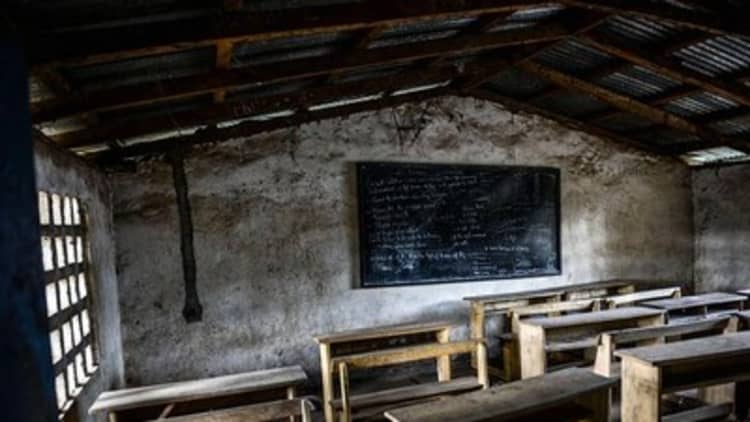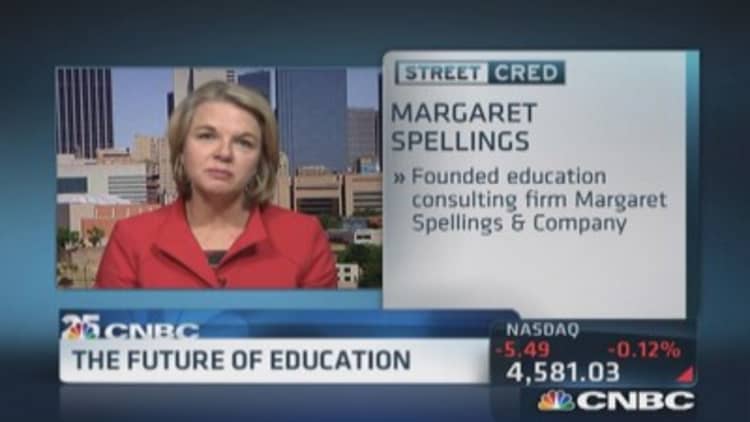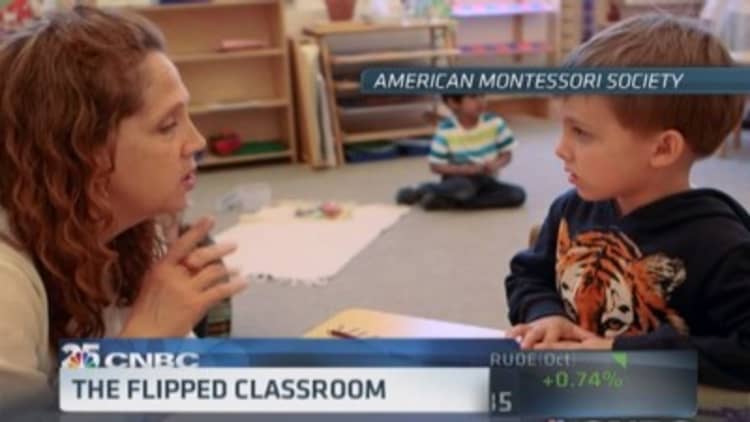
There are growing concerns that the benefits of a college degree are on the decline, while costs continue to rise. This so-called bubble in U.S. higher education is focused on the mounting debt load of college students and their difficulty in finding a degree or job that economically justifies the cost. But in the next 25 years, some futurists say the bigger issue—and the one that could likely cause this bubble to burst—will be the inevitable collapse of many colleges and universities as learning goes virtual.
Clayton Christensen, a professor at Harvard Business School and the father of disruptive innovation theory, famously predicted in 2008 that half of high school classes will be online by 2019. With the expansion of the digital campus, many mid-level institutions of higher education could become obsolete, and the new landscape may be largely unrecognizable.
"Half of the colleges and universities that exist in the United States will cease to exist," said author and futurist Nathan Harden, echoing Christensen's famous comment. Harden predicts new technologies could eventually lead to "the end of the university as we know it."
The reason for the demise? Many institutions of higher learning, including some of the nation's most prestigious universities, such as Harvard and MIT, have started to open up their classes to the world through massive open online courses (MOOCS), in many cases for free, though how EdX ultimately plans to generate revenue remains a major topic of much speculation and debate.
The universities that are in trouble are those that are stuck in the middle. We're seeing this 'hollowing out of the middle' in industry after industry.Andy Hinesassistant professor and program coordinator at the University of Houston's Graduate Program in Foresight
"The economic forces at work now in the realm of online education are going to represent a huge challenge to many academic institutions as they see more and more students choosing an online option over the traditional residential experience," Harden said, adding, "People are not going to pay tens of thousands of dollars for something they can get for free."
MOOCs and open courseware are already providing a front-row seat to top university classes for a wide range of students around the globe.
Right now some colleges that already tout a digital campus are still conducting most of their business as usual. But in the next 25 years—maybe even sooner—futurists expect cloud technologies now being used in many consumer businesses to be adopted by institutions of higher education to meet the needs of their core customers: their students.
"One single professor teaching one class can literally instruct hundreds of thousands of students at one time," Harden said.
Andy Hines, an assistant professor and program coordinator at the University of Houston's Graduate Program in Foresight, said, "There's no need to necessarily gather and listen to a lecture for the same three hours every week. Students can sort of listen to the lecture at their convenience. The big mega-shift we see coming in education is a shift in focus from the needs of the institution to the needs of the students."
MOOC rebuke
The march of the MOOCs, though, hasn't been without its stumbles. Many critics within the higher-education sector have been vocal about the risks that MOOCs present, including a San Jose State professor who lashed out at his own university last year for offering an EdX course, created by a Harvard professor. The San Jose State professor argued the Harvard course was reduced to little more than an online tutorial for San Jose State students, while Harvard students continue to receive the full in-class course experience. He warned of a growing "injustice" in the education system through which the Ivies are able to disseminate "cheap" versions of their content to public universities, which use these MOOCs as an easy budget fix at a time of shrinking public support for education.
Meanwhile, San Jose State's own high-profile effort to offer MOOCs in a partnership with Udacity—one of Silicon Valley's most prominently backed MOOCs—was humbled in summer 2013 when initial test scores were even lower than scores from comparable in-classroom courses. The initial partnership was suspended, and it has returned in a significantly scaled backed form.
Amherst College's faculty made waves last year went it was among prominent faculty groups to reject requests from its president and from EdX to join the Harvard/MIT-led initiative, though EdX has continued to add major universities across the globe to its advisory board, including Dartmouth, this year. Shortly after Amherst's decision, Duke University's faculty voted to leave another education technology initiative aimed at creating live, online for-credit courses by online learning company 2U. Just this summer, 2U pulled the plug on the program, Semester Online, entirely.
Read MoreHow you'll earn an MBA in 25 years
The shift to a student-centric model leveraging technology at the expense of the physical institution would require a drastic change in financing for these institutions as well. Futurists say big-name universities with strong private endowments should be fine. Low-cost community colleges will be "OK," too. But those institutions that are largely dependent on tuition will struggle and may not survive.
"The universities that are in trouble are those that are stuck in the middle. We're seeing this 'hollowing out of the middle' in industry after industry," the University of Houston's Hines said.
The digital campus will represent a new level of access and opportunity for many people around the world who may not otherwise be able to afford college, and it certainly has the potential to upend traditional classroom learning.
But for now the rise of virtual learning will require more colleges and universities to offer it in ways that will equal or enhance the traditional education experience for students and educators and to develop into a sustainable financial model for schools, students and online entities.
—By CNBC's Sharon Epperson











